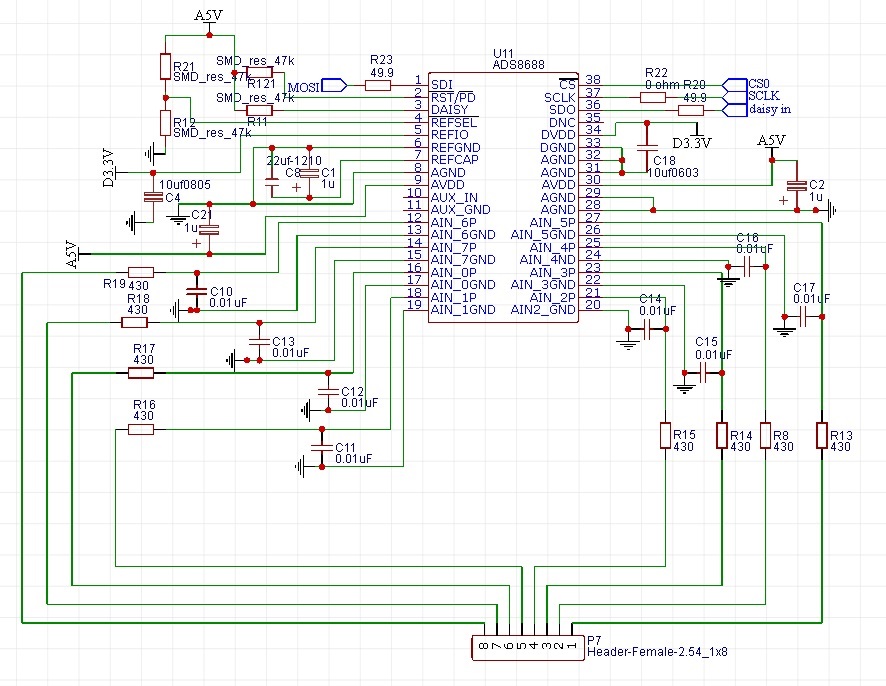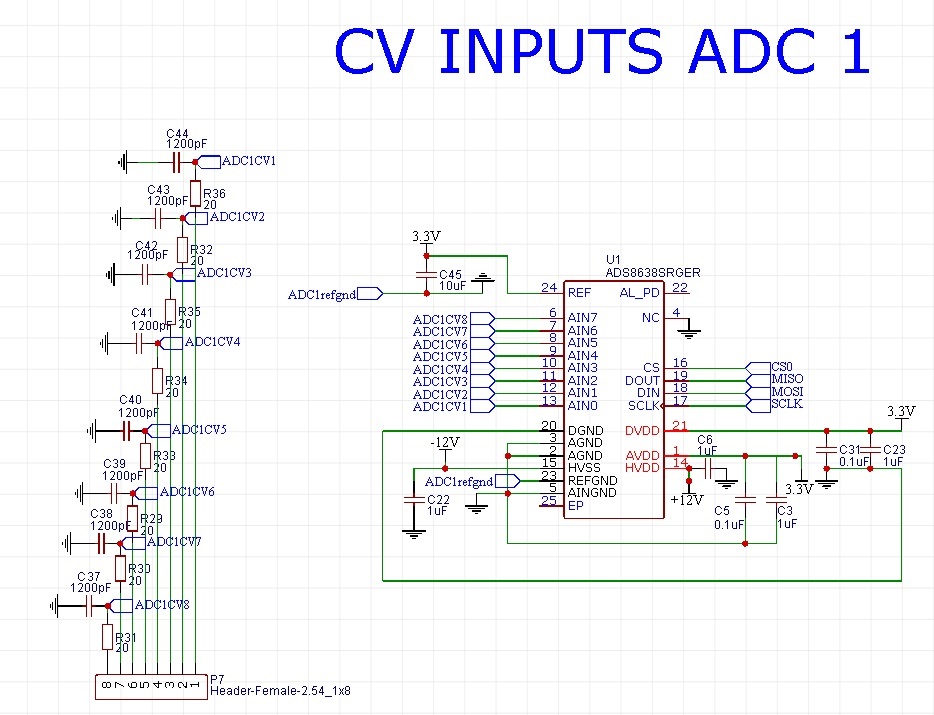Other Parts Discussed in Thread: LM5017, ADS8588H, ADS8638, OPA140, ADS8668, ISO7141CC
Hi,
I'm trying to develop an external cv inputs reader (we are in analog modular synthesizer field) using 2 ads8688 in daisy mode . The cv inputs can be -5V to 5V or 0V-10V in range.
In the setup we would use an external 3.3V reference because this board is meant to be used with a teensy 3.6. I attach the schematic for the first ADS8688.
Does it look ok to you? Also, i would like to ask if you would include in the setup (considering the use) the ISO7141 and the LM5017..
Im not an engineer, but a musician..There could be many errors, so all suggestions and corrections are highly welcomed !! thanks for your time guys!!



